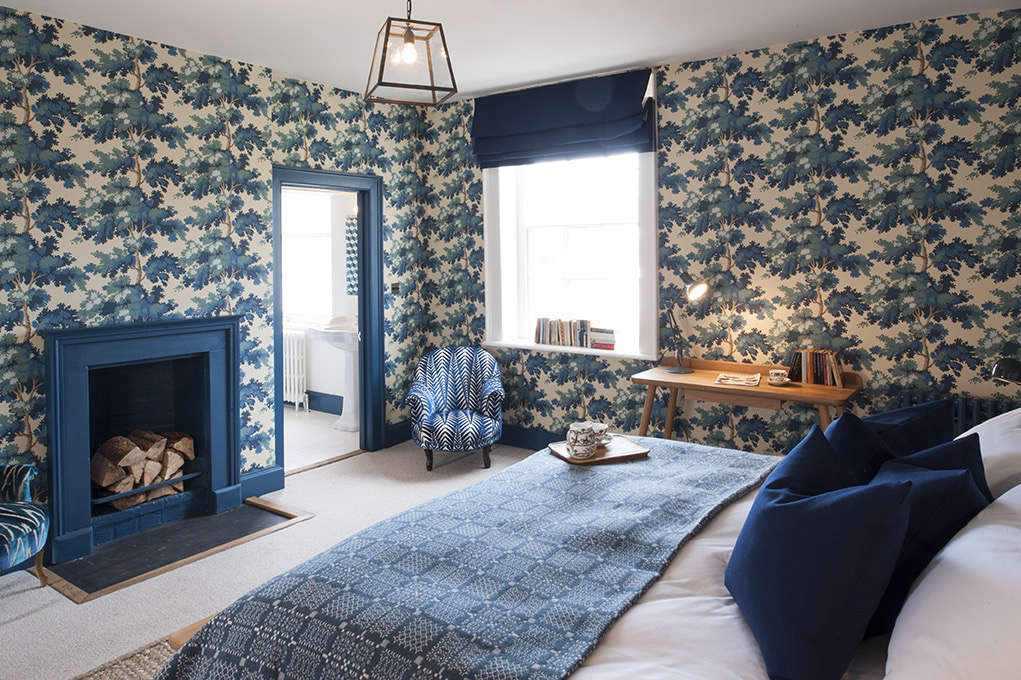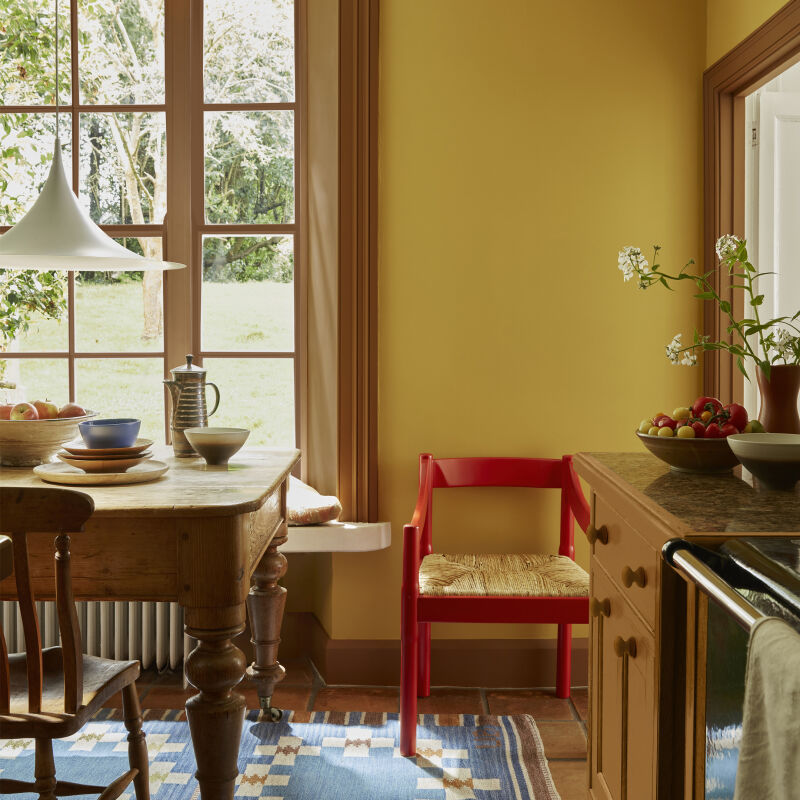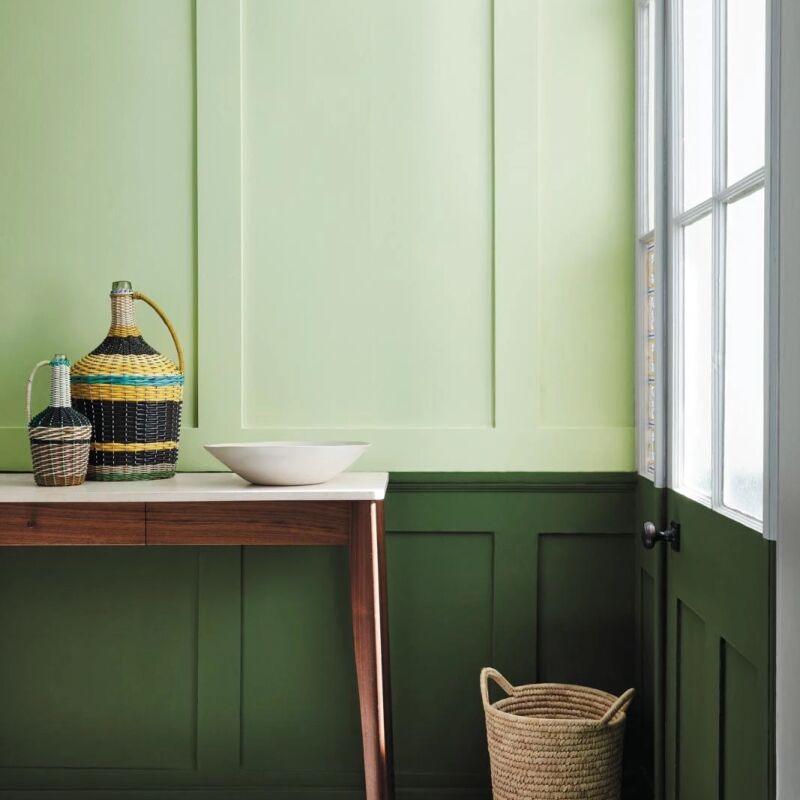Pedro da Costa Felgueiras, a lacquer and historic paint techniques specialist known as London’s “custodian of old techniques," explains the application of verdigris glaze; a slow and careful process of building up many layers of transparent glaze on top of a solid paint coat.
As evident in Greek and Roman literature, the preparation of verdigris, made from the copper salts of the weathered metal that has been exposed to either acetic acid or salt, has been around since the antiquities. Used in European easel painting in the 16th and 17th centuries, the color was highly fashionable in 18th century English interiors. "I know it best when it has been applied on to the walls inside display cabinets to produce a dramatic, intense, deep glossy bluish green," da Costa Felgueiras says.
Photography by Amber Rowlands.

Above: "The final result is like no other bluish green you might ever come across," da Costa Felgueiras says.

Above: "A recipe from a Florentine book even suggests applying it on glass, although I'm not quite sure how effective this might have been as a protection from sunshine," says da Costa Felgueiras. "However, it would have caused any light flooding the room to be indeed very green."

Above: "When I buy the ingredients for such a finish, the base material consists of a highly viscous transparent green resin paste that needs to be warmed up in a 'bain marie' in order to render it liquid; it then it has to be mixed with a little fir turpentine to allow it to flow again to produce a thin and even coat," da Costa Felgueiras says. "However, a too large amount of turpentine will actually render it rock solid. Needless to say, it is quite a tricky glaze to apply."

Above: In the restoration of Horace Walpole's Gothic Castle, Strawberry Hill, founder of Lacquer Studios Pedro da Costa Felgueiras applied the verdigris glaze to a built-in cabinet designed by Walpole to display his fine china collection. "Traditionally, the foundation paint used would be lead based mixed in linseed oil, very often mixed with a small amount of yellow ochre pigment," da Costa Felgueiras says. "Depending on the final hue of the paint effect, starting with a yellow ochre base would make the final result more green and less blue."
Above: Pedro da Costas Felgueras demonstrates the slow application of verdigris glaze; layer by layer. Video by Amber Rowlands.




Have a Question or Comment About This Post?
Join the conversation (0)